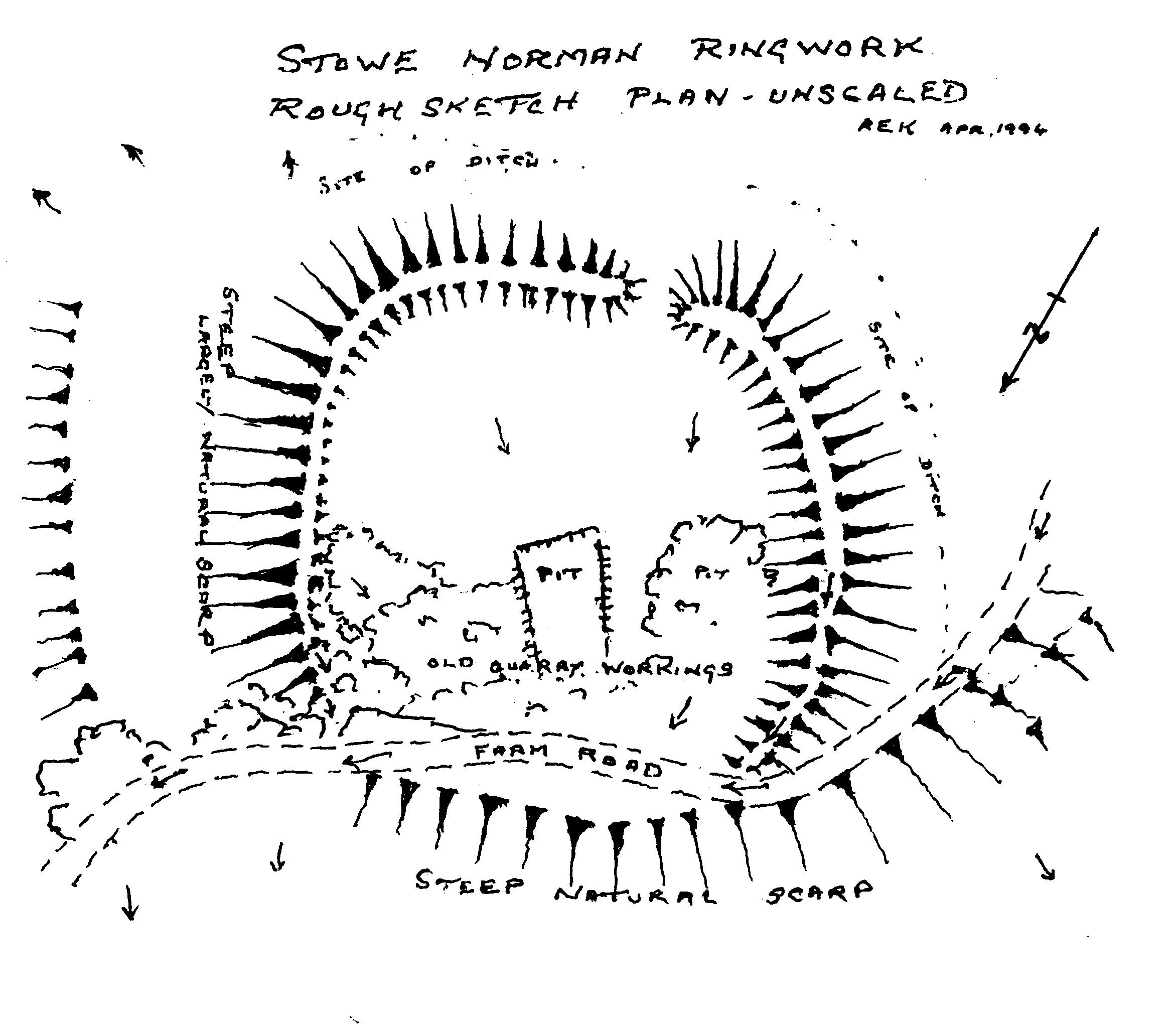Stowe 'Ringwork'
The site at Stowe some 1½ miles from St Briavels castle is most peculiar. It has the appearance of what is generally categorized as a ringwork castle, and indeed this is what it has often been classified as. Various reports describe it as the first castle of St Briavels, but this is not based on any historical or archaeological substance.
 The
current remains as recently planned by Richard Kay at first glance do show the
recognised design of a ringwork castle with a slightly raised interior, even if
the western portion does appear to have been destroyed by quarrying. However,
close inspection of the roughly 10-15' high mass of rubble. There is no trace of any laid masonry and no trace of
mortar could be ascertained, although one piece of stone lying on the northern
rampart did look as if it may have been cut ashlar. Entrance to the 'ring' was
apparently gained from the east, although this looks as if it was possibly a
late mutilation. The ditch in front of the rampart being obviously filled and
raised here. This slight ditch can be made out around most of the site, and
where the northern rampart has been cut by the later quarrying this incredibly
weak rock-cut ditch can be seen in profile. However at the north-eastern end of
this rampart a rock spur can be seen filling this ditch indicating that it was
not finished at this point. This would suggest that either the site was never
completed, or the slight ditch was just used for the rubble of the rampart. To
the east of the 'ringwork' is what may be a platform (bailey?) in a wheat field.
The
current remains as recently planned by Richard Kay at first glance do show the
recognised design of a ringwork castle with a slightly raised interior, even if
the western portion does appear to have been destroyed by quarrying. However,
close inspection of the roughly 10-15' high mass of rubble. There is no trace of any laid masonry and no trace of
mortar could be ascertained, although one piece of stone lying on the northern
rampart did look as if it may have been cut ashlar. Entrance to the 'ring' was
apparently gained from the east, although this looks as if it was possibly a
late mutilation. The ditch in front of the rampart being obviously filled and
raised here. This slight ditch can be made out around most of the site, and
where the northern rampart has been cut by the later quarrying this incredibly
weak rock-cut ditch can be seen in profile. However at the north-eastern end of
this rampart a rock spur can be seen filling this ditch indicating that it was
not finished at this point. This would suggest that either the site was never
completed, or the slight ditch was just used for the rubble of the rampart. To
the east of the 'ringwork' is what may be a platform (bailey?) in a wheat field.
It is possible that this site is another adulterine castle, however a more interesting and irregular possibility does offer itself. That is that this site is related to the monastic holding at the nearby Stowe Grange. Stowe was certainly granted to Parc-Grace-Dieu abbey by its founder, John Monmouth Senior (d.1228), probably in the early 1220's. If this structure is related to granges then it would be expected that similar 'ringworks' should exist at other nearby granges. Another such ‘ringwork’ appears to be at Waun Gunllwch (SO.059413) above Gwenddwr, held by the Cistercian monastery of Dore. This too is rated as a 3/4 or ½ ringwork. It would be interesting to see if other sites are to be found in the vicinity of granges. However only excavation is likely to tell if this site was military, religious or agricultural.